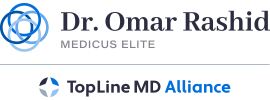Multidisciplinary Care in Gastric Cancer: An Evaluation of the Current Practice Nationwide
Introduction: Gastric adenocarcinoma is the 5th leading cause of cancer, and 3rd leading cause of cancer mortality, globally.1 It is one which usually presents late in the course of disease. 5-year survival rates have hovered around 20-30% for the last several decades.3 Treatment involves systemic therapy, including targeted therapy, radiation therapy, with or without surgery, or surgery alone.3,4 Because of the controversies in the literature, we hypothesized that there is a great deal of variation in treatment regimen and outcomes for gastric adenocarcinoma patients in the United States.
Methods: The CMS database was searched for gastric adenocarcinoma patient demographics, comorbidity score, tumor location, systemic therapy, surgery, and outcomes, and the results were compared with standard statistical comparisons.
Results: There was no statistically significant difference in charges between surgery only ($127,075), and combination surgery with chemotherapy ($127,613). CCI analysis demonstrated a lower CCI in the surgery-only group vs. surgery with chemotherapy (P <1×10-3, 95% CI). LOS analysis was statistically significant between comparison groups Average LOS was 14.95 days for surgery only and 13.63 for combination therapy. RR for Surgery only at 30 day, 90 day, and 1 year were 3.7%, 18.2%, and 32.0 %. Combination therapy had RR of 8.2%, 22.5%, and 40.7%. The differences in RR were significant between comparison groups at 30 days (p=2.8×10-4), 90 days (p=1×10-5), and 1 year (p=1×10-5, 95% CI).
Conclusion: We have shown that neoadjuvant chemotherapy in this subset of patients did not result in worse outcomes or increased average charge per patient compared to surgery alone.

